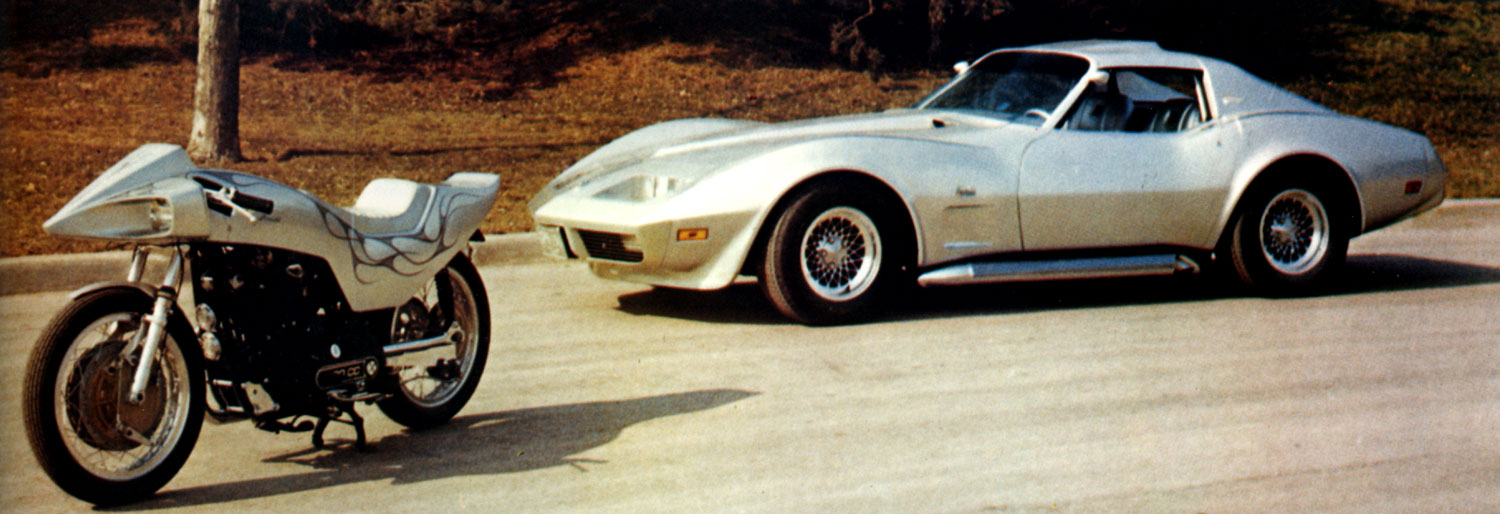
Bill Mitchell’s Super Bikes, Part 2
By Jack K. Yamaguchi
Published in Car Styling No. 11, July 1975
PRIVATE venture of Bill Mitchell, the generalissimo of GM Design, on super bikes is getting more serious and better, as predicted by his lieutenant in the projects, Dave North, a senior GM designer himself, in CAR STYLING No.7. Those bikes in the previous feature belong to the first generation of Mitchell’s improved breed. Then the two latest examples as presented here must be classified as representative of the second “creative” generation. Bikes are Mitchell’s very personal and private enterprise designed and built for his styling pleasure and riding joy without regard to commercial viability and volume production feasibility (for that matter, they are all strictly one-off jobs.) As such, they convey his personality and likes more vividly. Granted his likes may be your dislikes; they are that controversial, causing a few pairs of knit brows and more drooling mouths.
My observation of the trend in his latest works is based on a few notes of effective brevity the design chief of mighty GM sends me, through brief conversations during my so few visits to Tech. Center, and by the actual bikes in process of modification and construction. Having completed improvements of a number of representative European and Japanese super bikes, Mitchell and his small and tight group of assistants are now working on a fewer carefully selected projects.
The Ducati 750 and Yamaha TR3 as introduced here are more of the first generation group. It is apparent that Mitchell preserved the basic characters of the Italian roadster and Japanese racer, and respected their engineering finesse. Exterior modifications carried out on the Yamaha are almost minimum with function in mind. Except the front fairing and rear body section, the Ducati is almost stock. And new parts are designed in perfect harmony with the original bike. Mitchell’s appreciation and respect for the old world’s charm, and his endeavors toward integration of better design features of Europe into his own works are well reflected in many of GM’s passenger car concepts, as are in those super bike projects.
Another interesting and somehow unexpected finding was what Mitchell did with one of his much coveted acquisitions—or what he didn’t do with it. Readers may recall that he had a brand new Yamaha TZ750 racing bike, undoubtedly THE most powerful over-the-counter racing bike ever offered, of which a batch of 200 machines were sold to “selected” customers by the Hamamatsu factory. Bill Mitchell recently parted with this potent racer in stock condition. He had seen a possibility in transforming a lighter TR3 racer into an agile roadster, but must have concluded the home for the TZ750 was on the race track. He, therefore, returned the racer to a racer’s hand. Such is Bill Mitchell’s perception and understanding of the art and sports of motorcycling.
The Super Designer who created an all American sports car, the one and only of its kind to date (needless to name, but for the record, the Chevrolet Corvette) is at work creating his own and all American motorcycle designs on two very special bikes. They are a Harley-Davidson 1000 and a monocoque bike powered by Honda CB550 Four engine. Both have frames and suspensions which are entirely different from production models. The Harley originally started its life as a track racer, to which Mitchell fitted an Italian Ceriani racing type front fork and a rear hydraulic disc brake as well as his usual prerequisite, an electric starter. On to this potent chassis he mounted a wild one piece fiberglass body work, painted in a beautiful shade of metallic silver. The lithe and lean creation powered by tremendously torquey big displacement V-Twin is indeed a “Stingray” on two wheels. The monocoque is even more original than the Stingray Harley.
Except its Honda engine and transmission, everything is new. Its light alloy monocoque frame which shows strong aircraft construction influence was built by a noted Californian racing car builder. It was a logical pursuit of lightness while retaining adequate torsional rigidity of the main frame section. In design and construction of the bike, advice was seeked from a former racing rider. This is definitely beyond the realm of a mere styling exercise. Seriousness of the project is well demonstrated in the use of a famous British racing bike frame, no less a machine than the Norton Manx, as a testbed for deciding vital geometry. The monocoque will also receive a one piece fiberglass body similar in concept to the Harley’s though it may not be as wild.
Bill Mitchell insists on lightness and lean build in motorcycle design. He is critical of massive bulk and increasing weight of some of recent super bikes, although not necessarily so toward bigger capacity motors. The Harley 1000 is a good example of his likes of hefty big cubic inch machines. And he will soon get a special electric start Norton 850 Twin. Bill Mitchell is not sold on the concept of the controversial Honda “Gold Wing” GL1000 water cooled 4-cylinder model, but he has still placed an order for one. Would he like it, and would Honda’s latest offering whet the Super Designer’s creative appetite? | am hoping he will find it at least interesting, so that it will receive the Mitchell touch. The GL’s unique frame structure should allow more freedom in styling which Honda’s designer did not take advantage of.
Previous Michell bikes’ posts on Dean’s Garage:

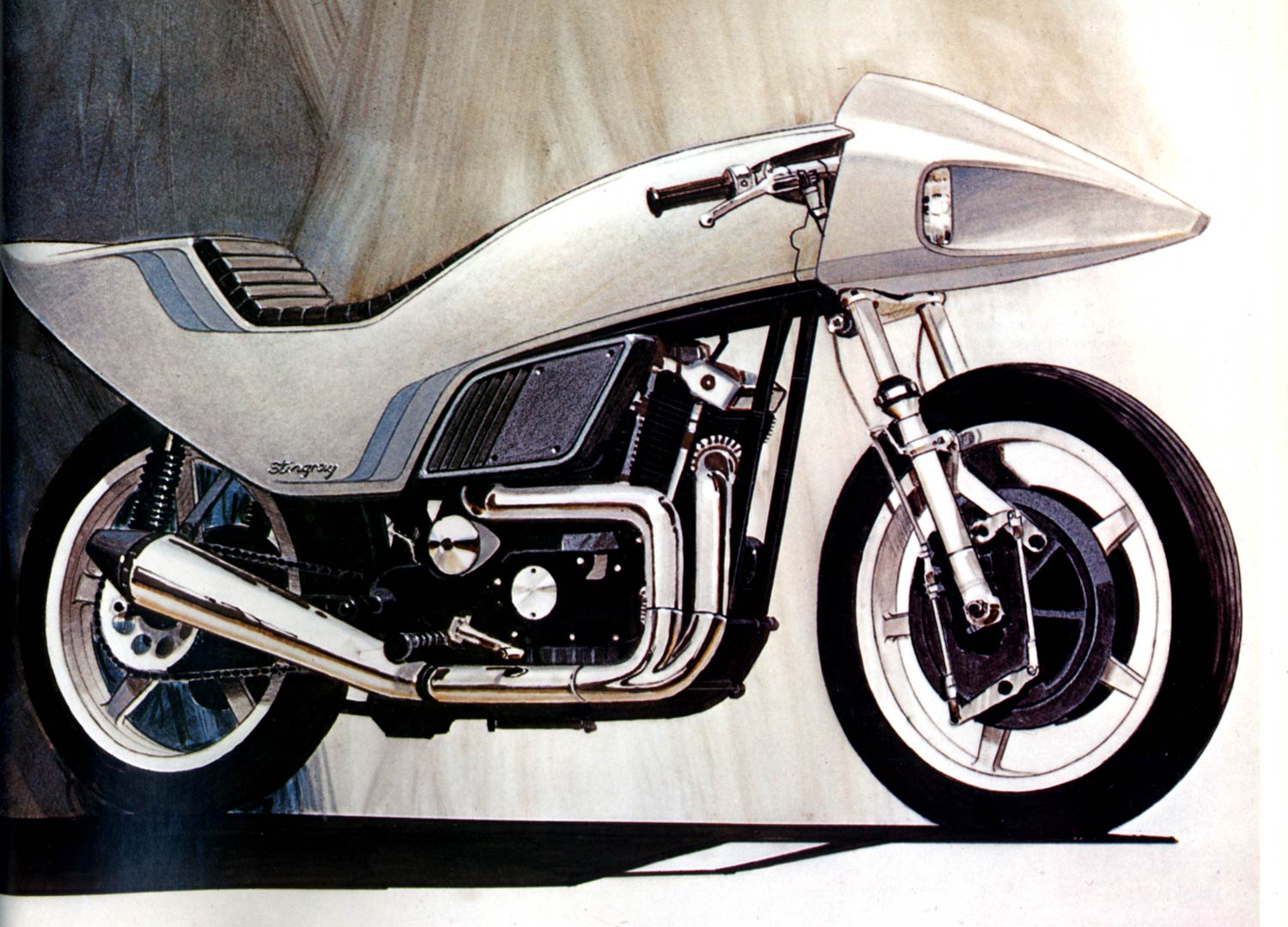
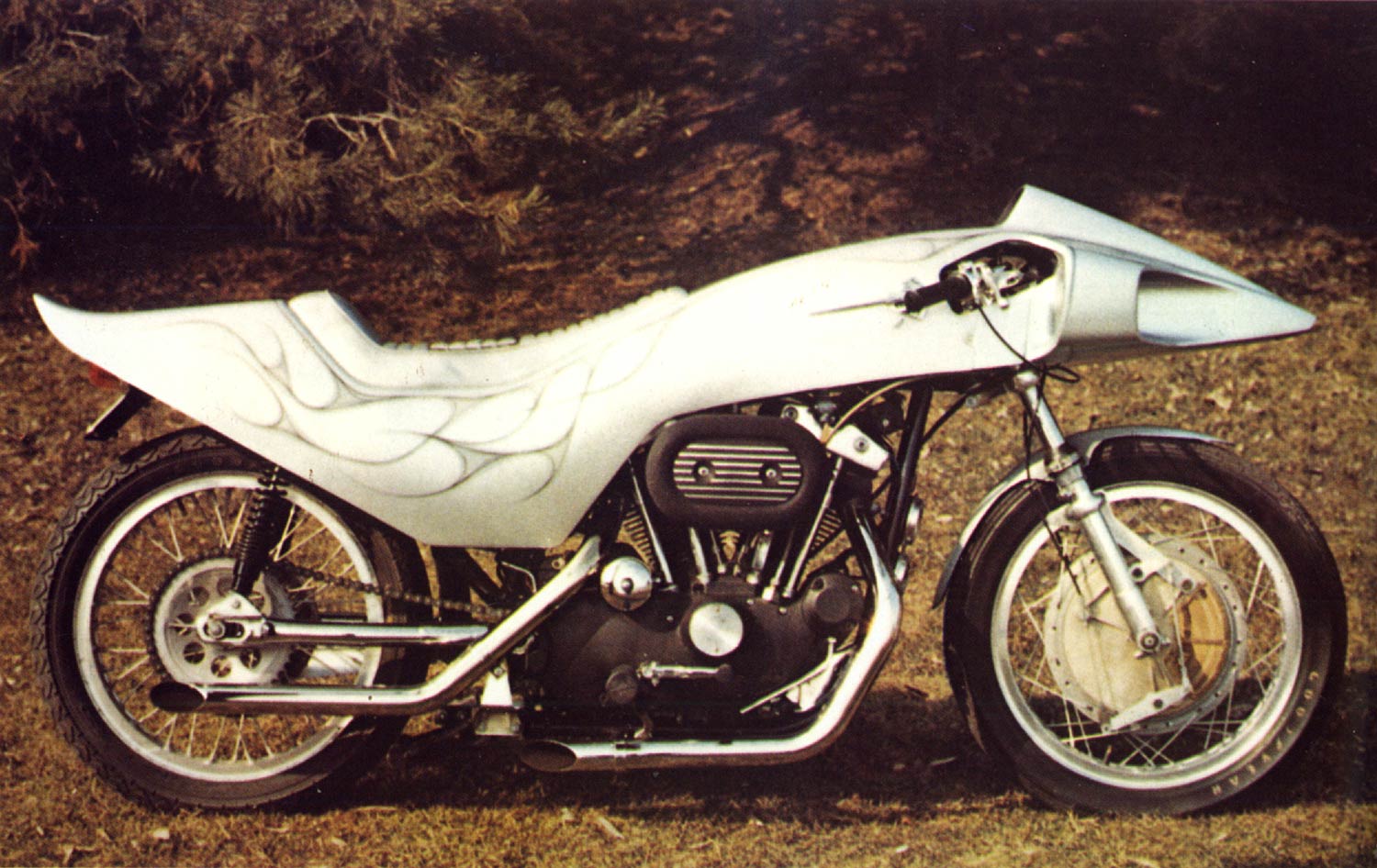
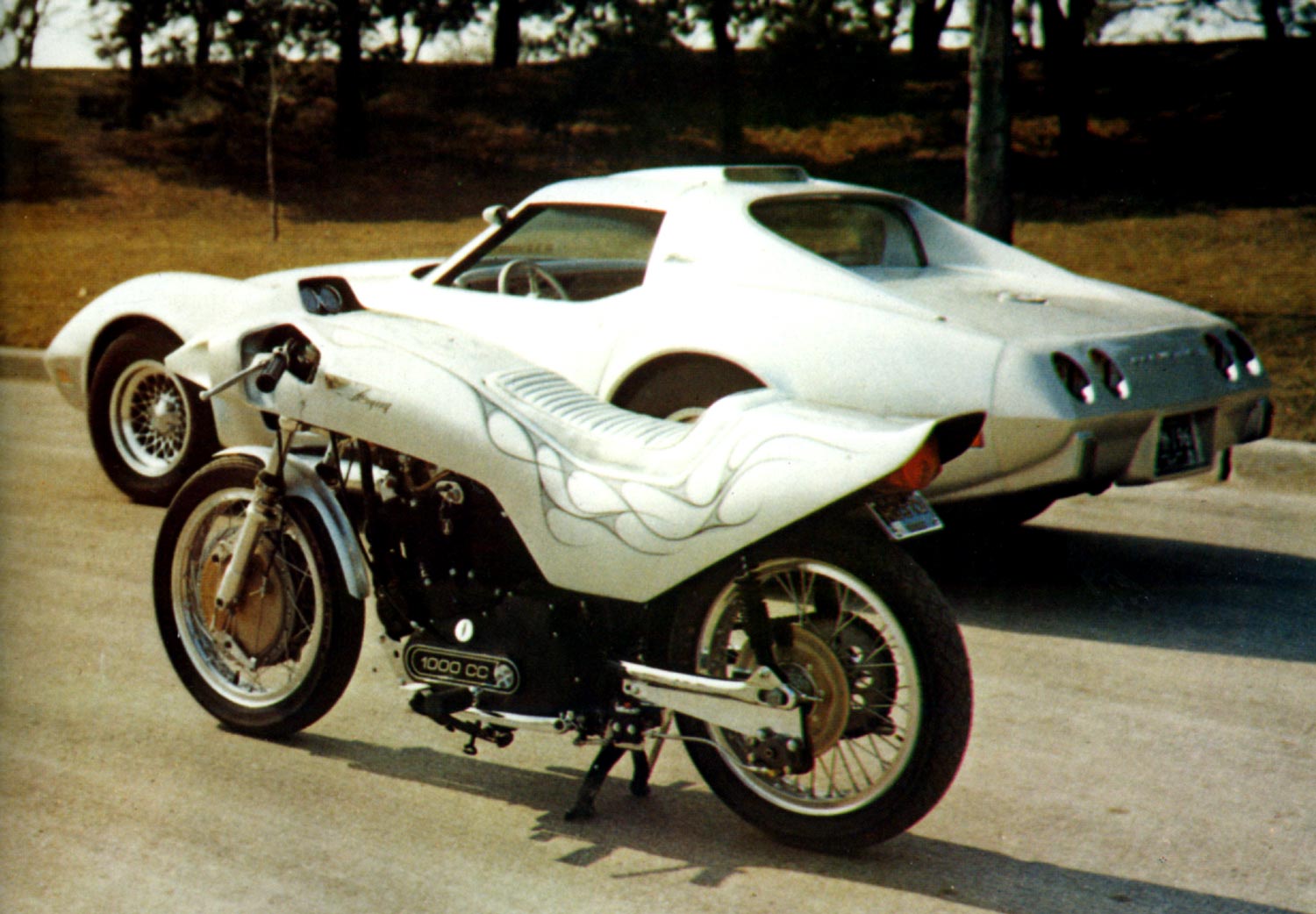
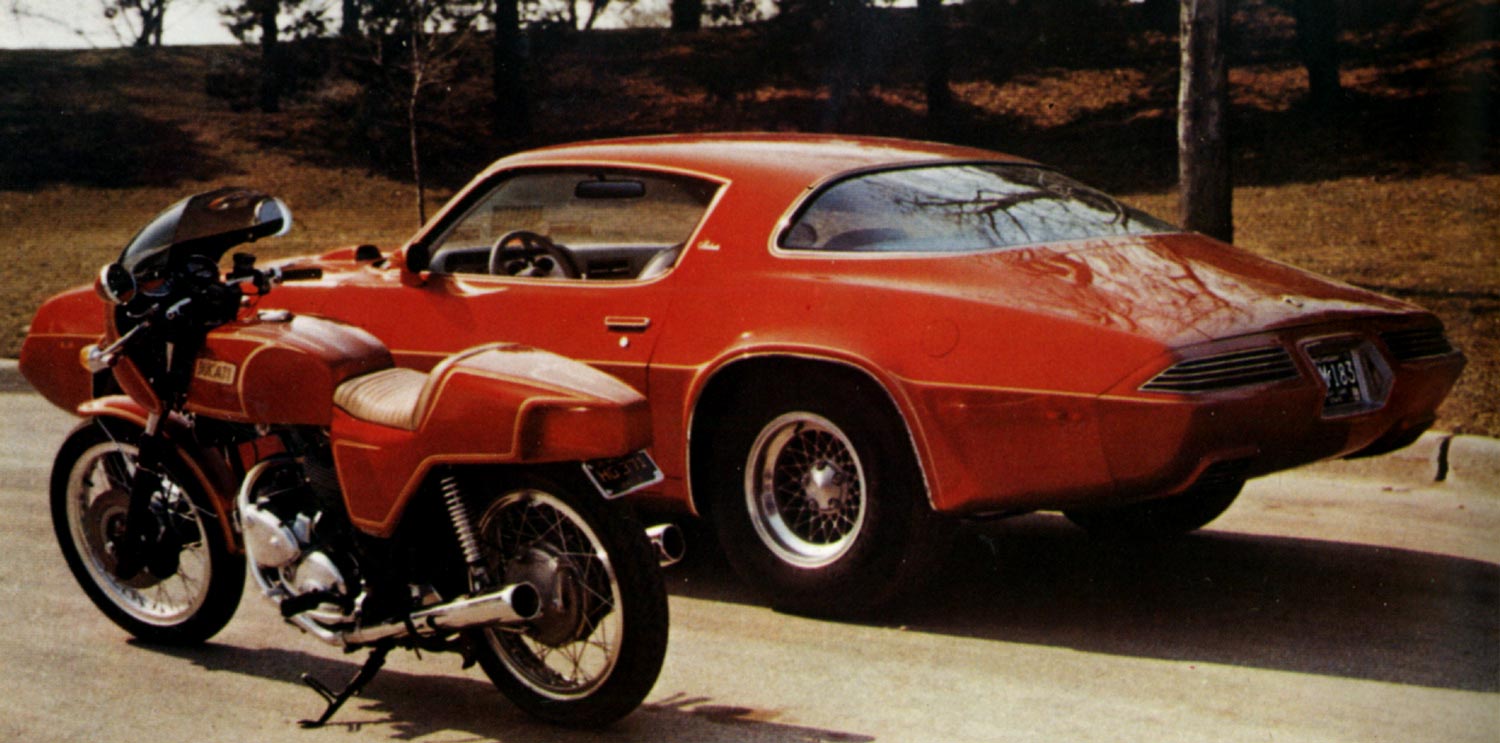
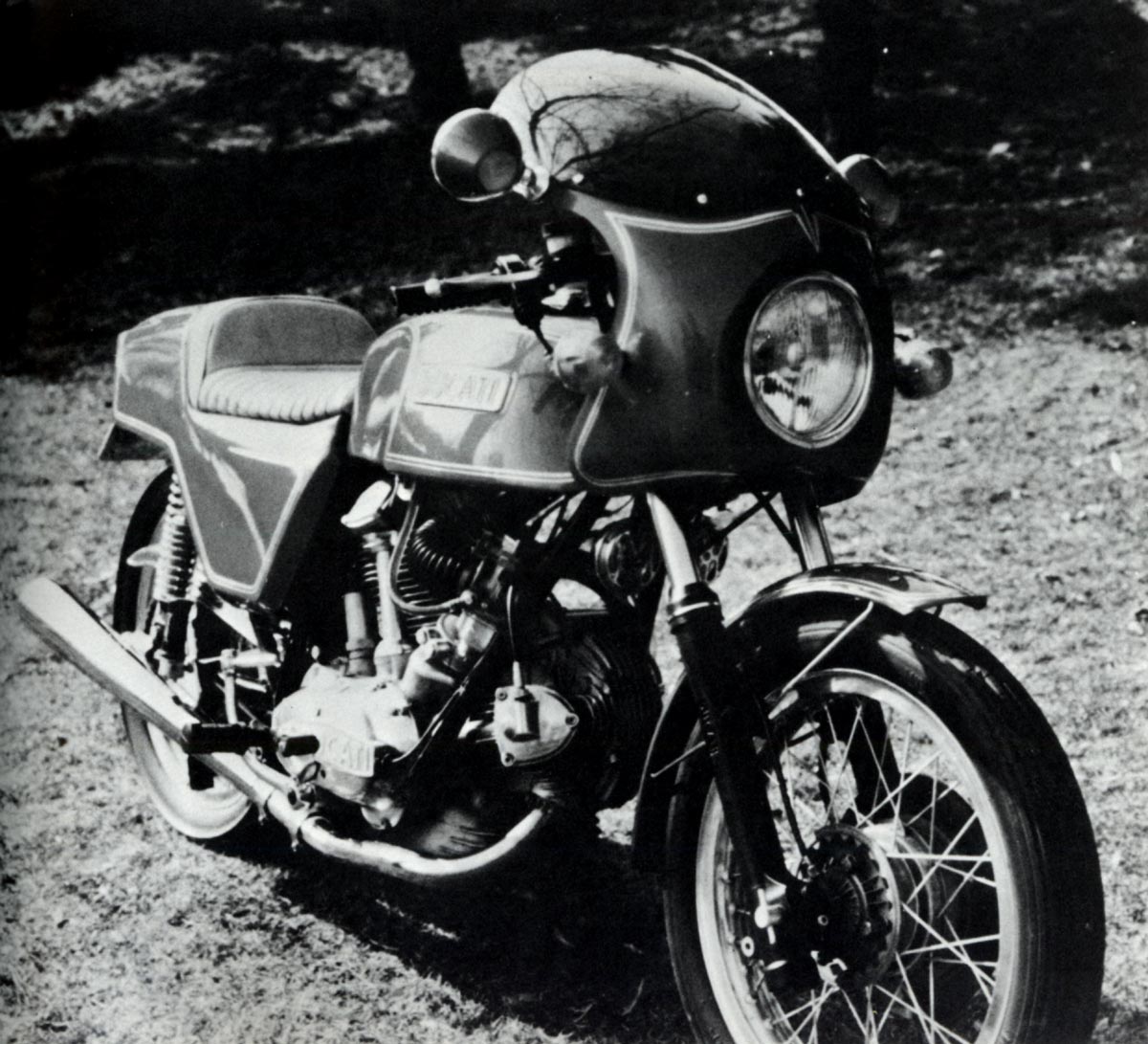
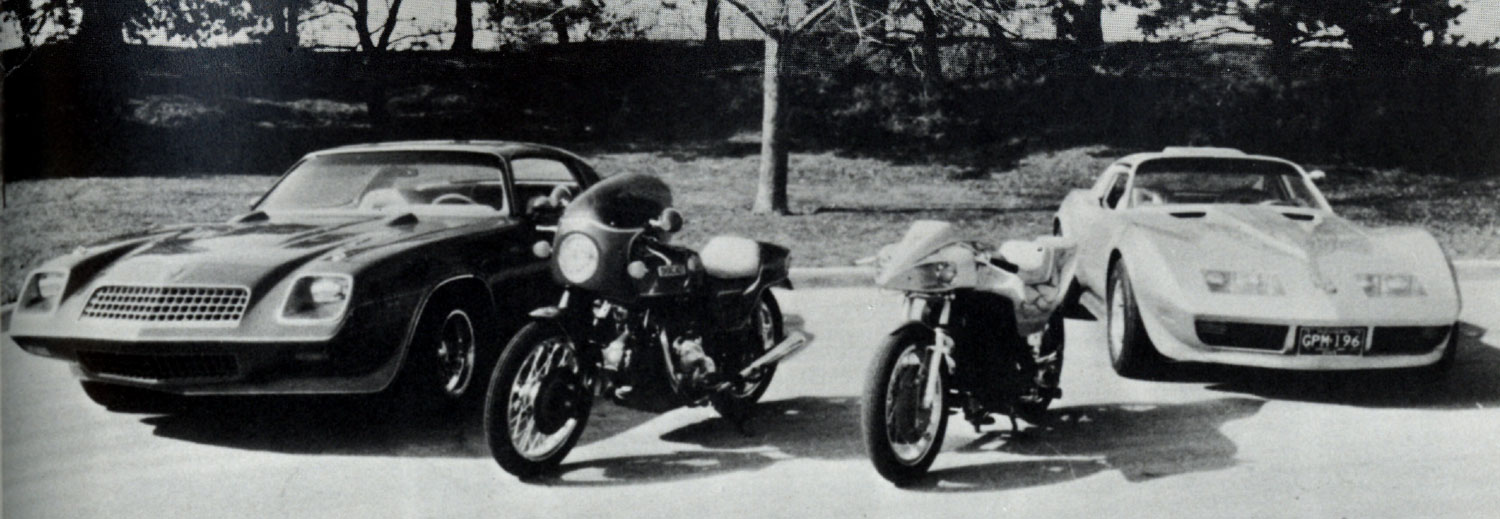
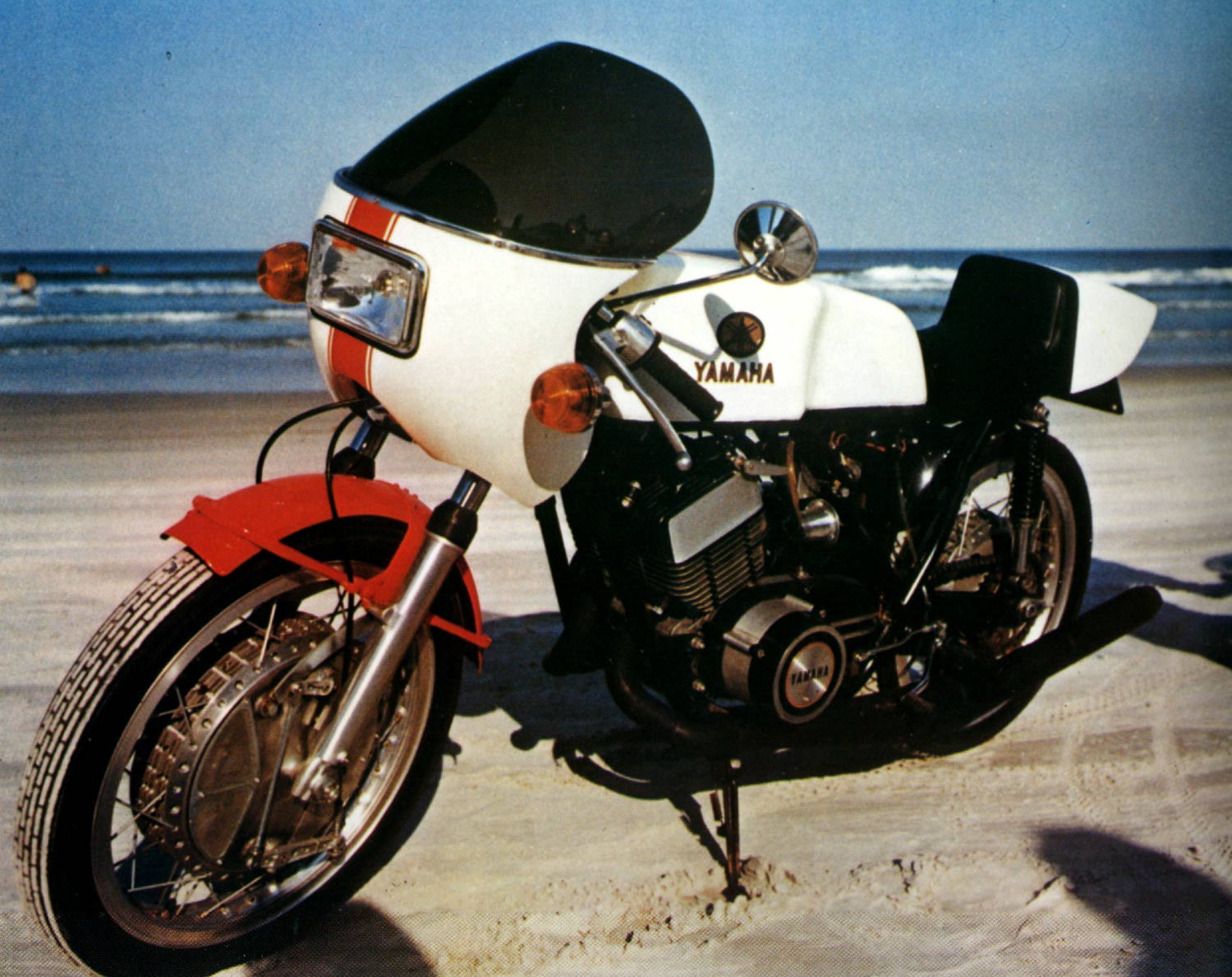
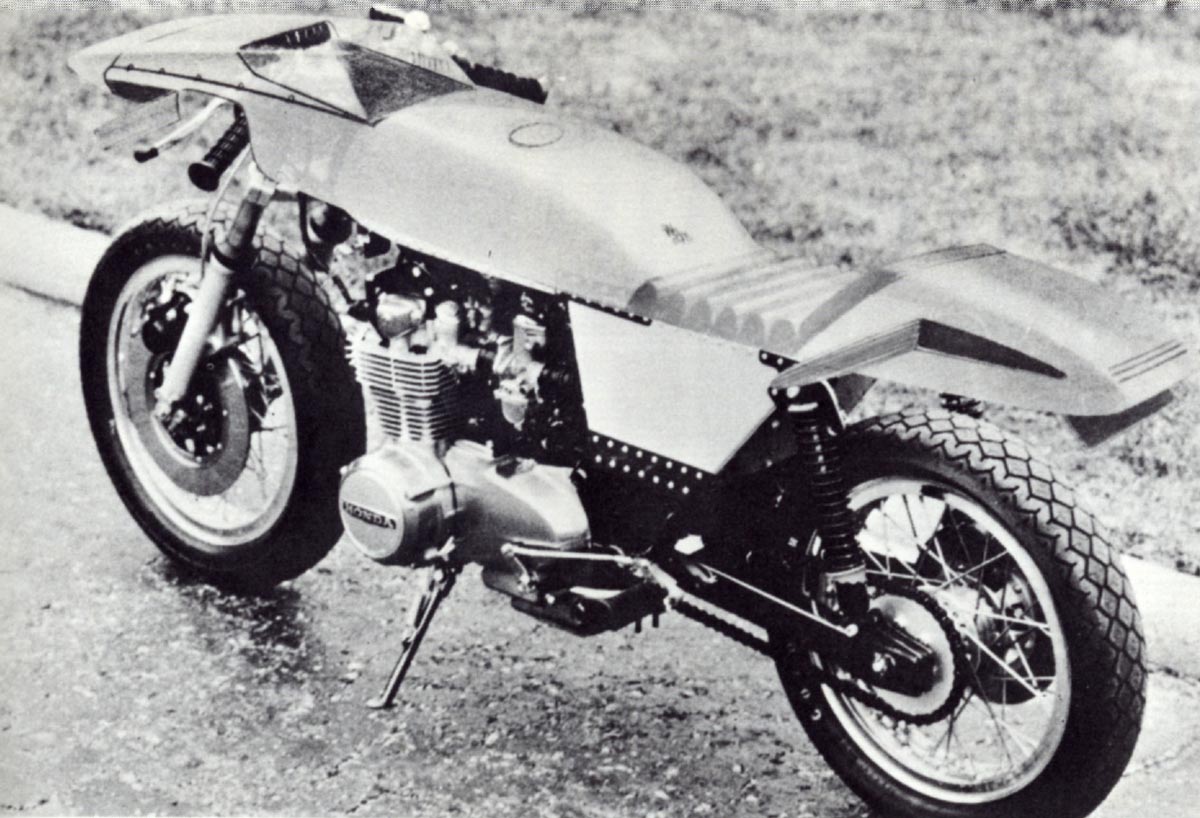
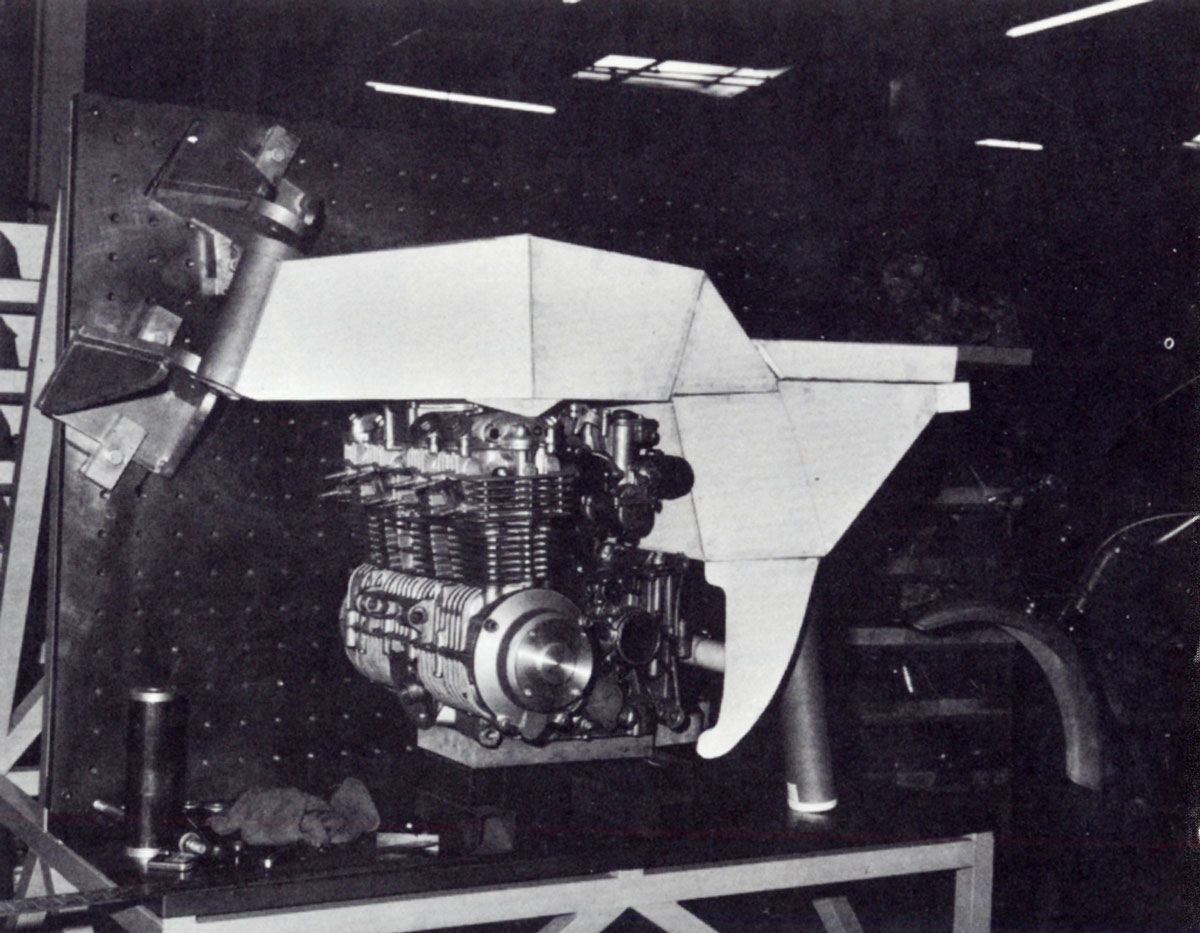
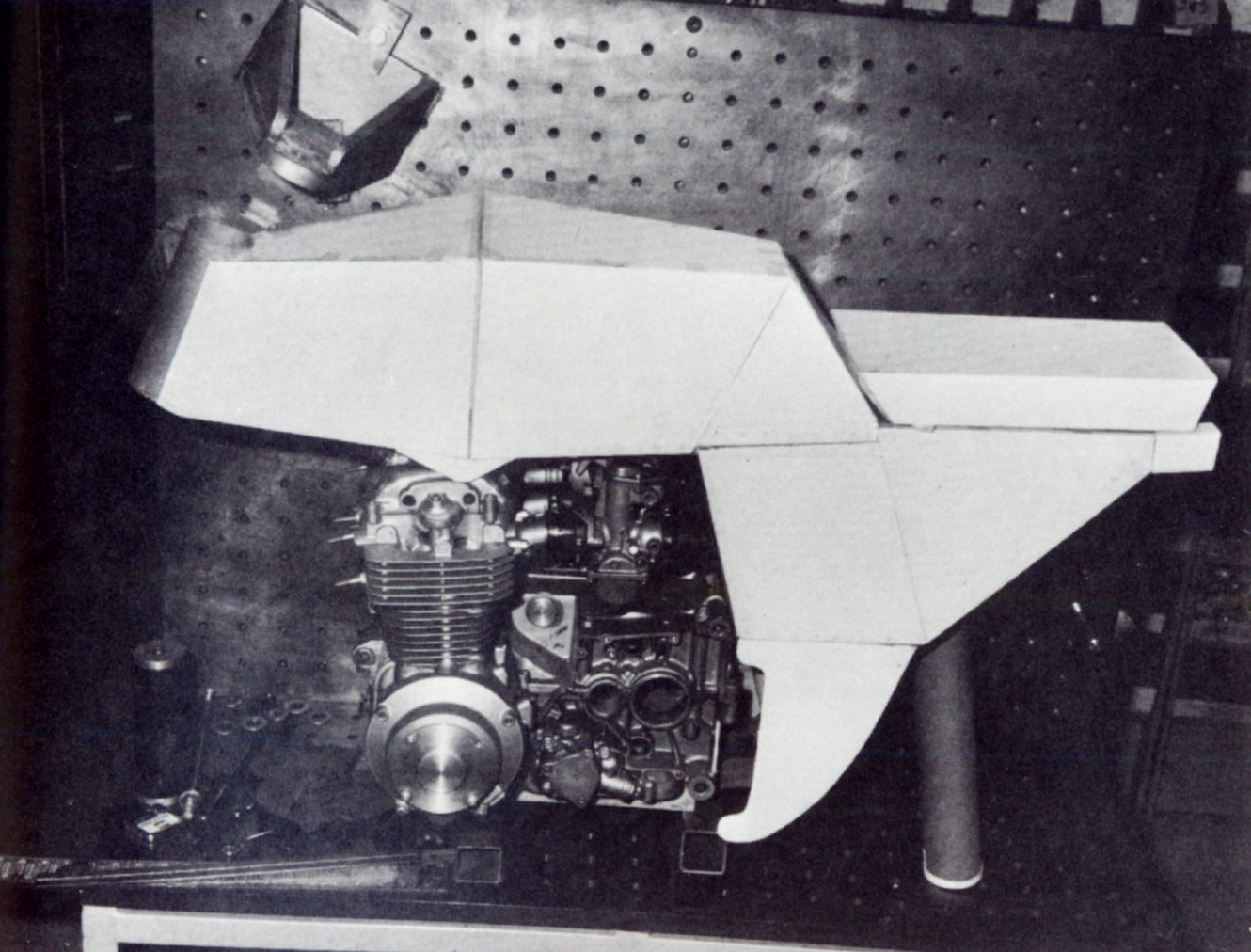
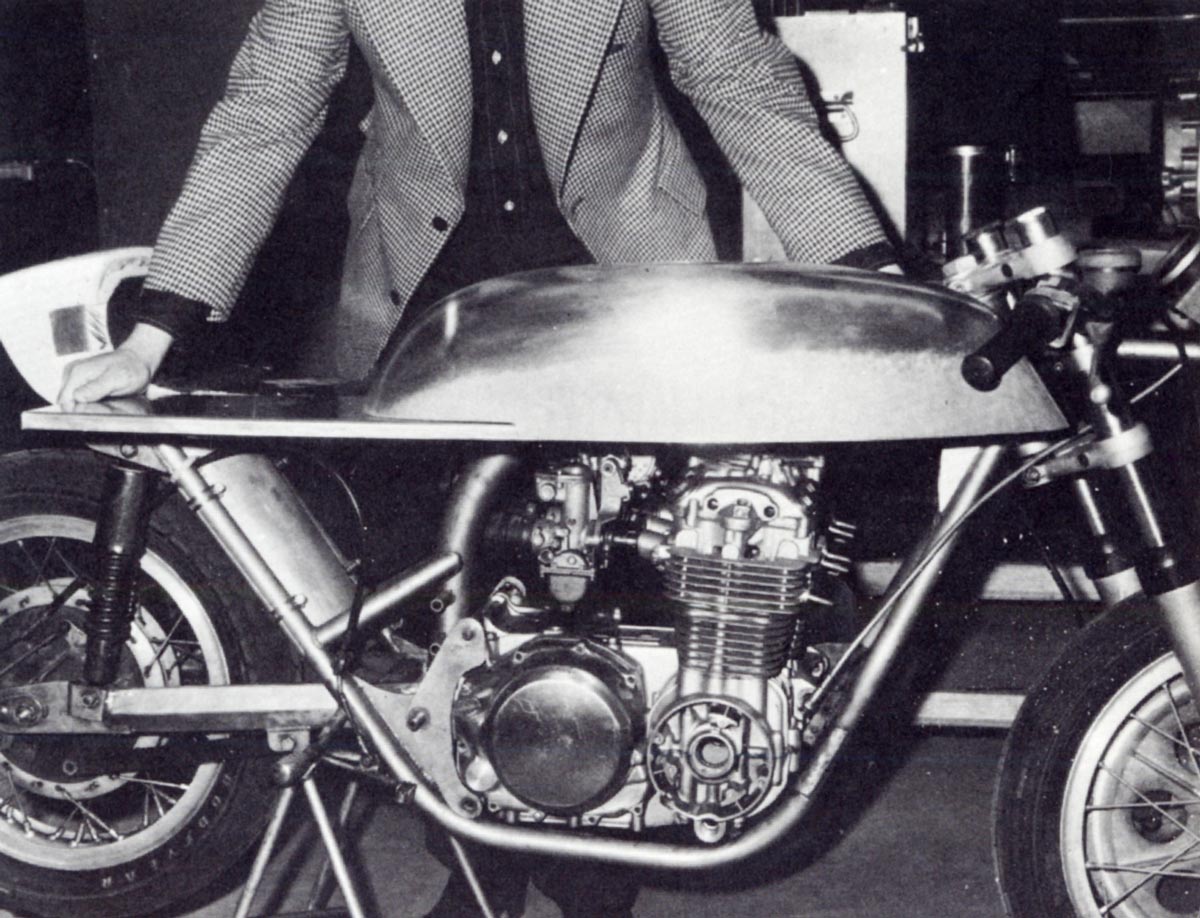
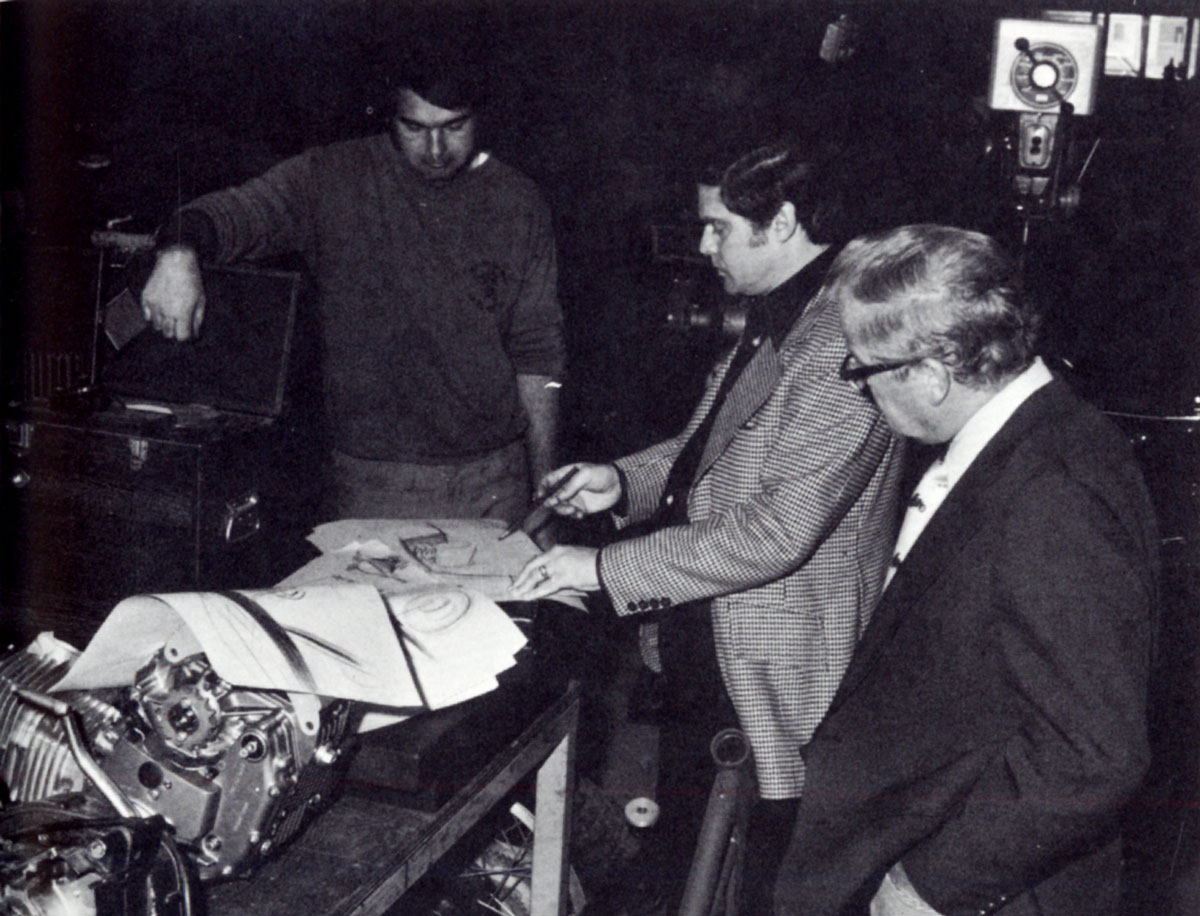
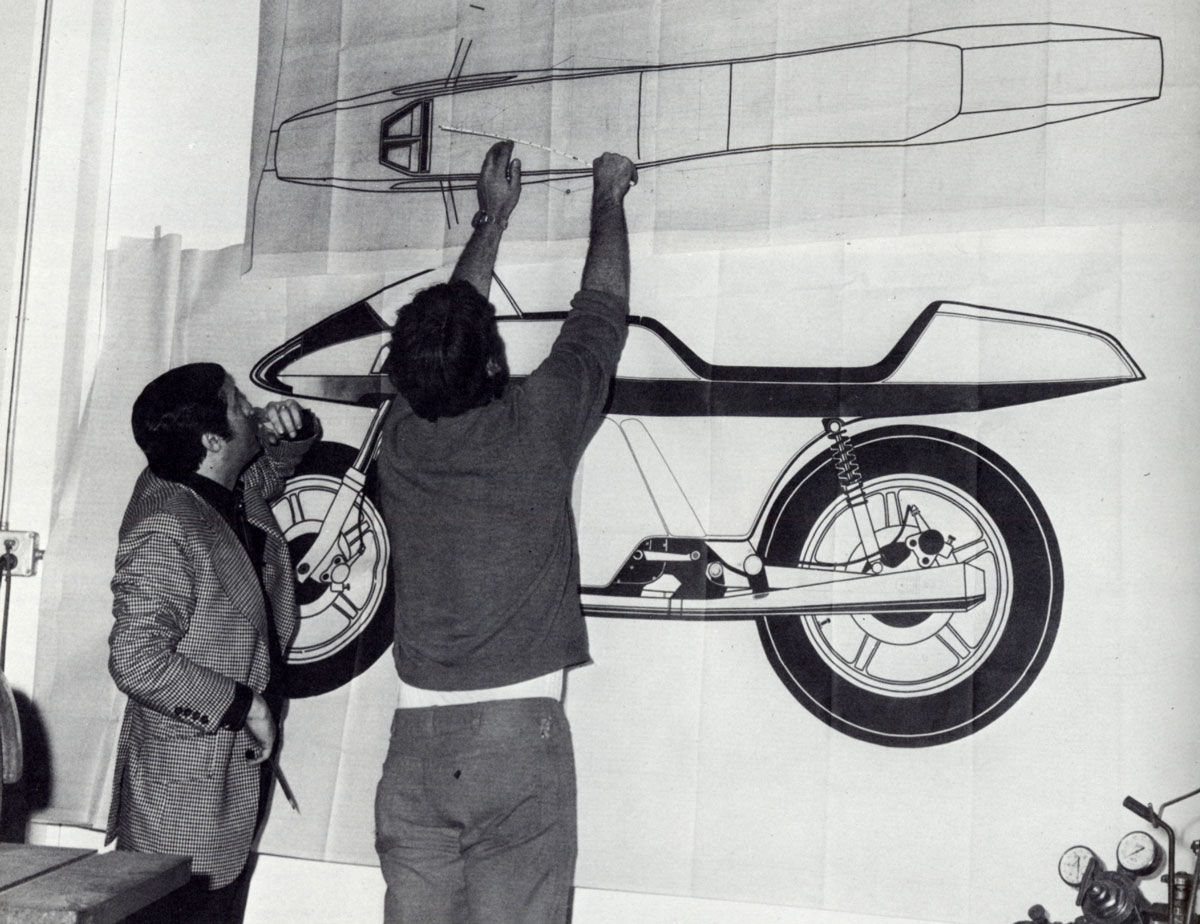
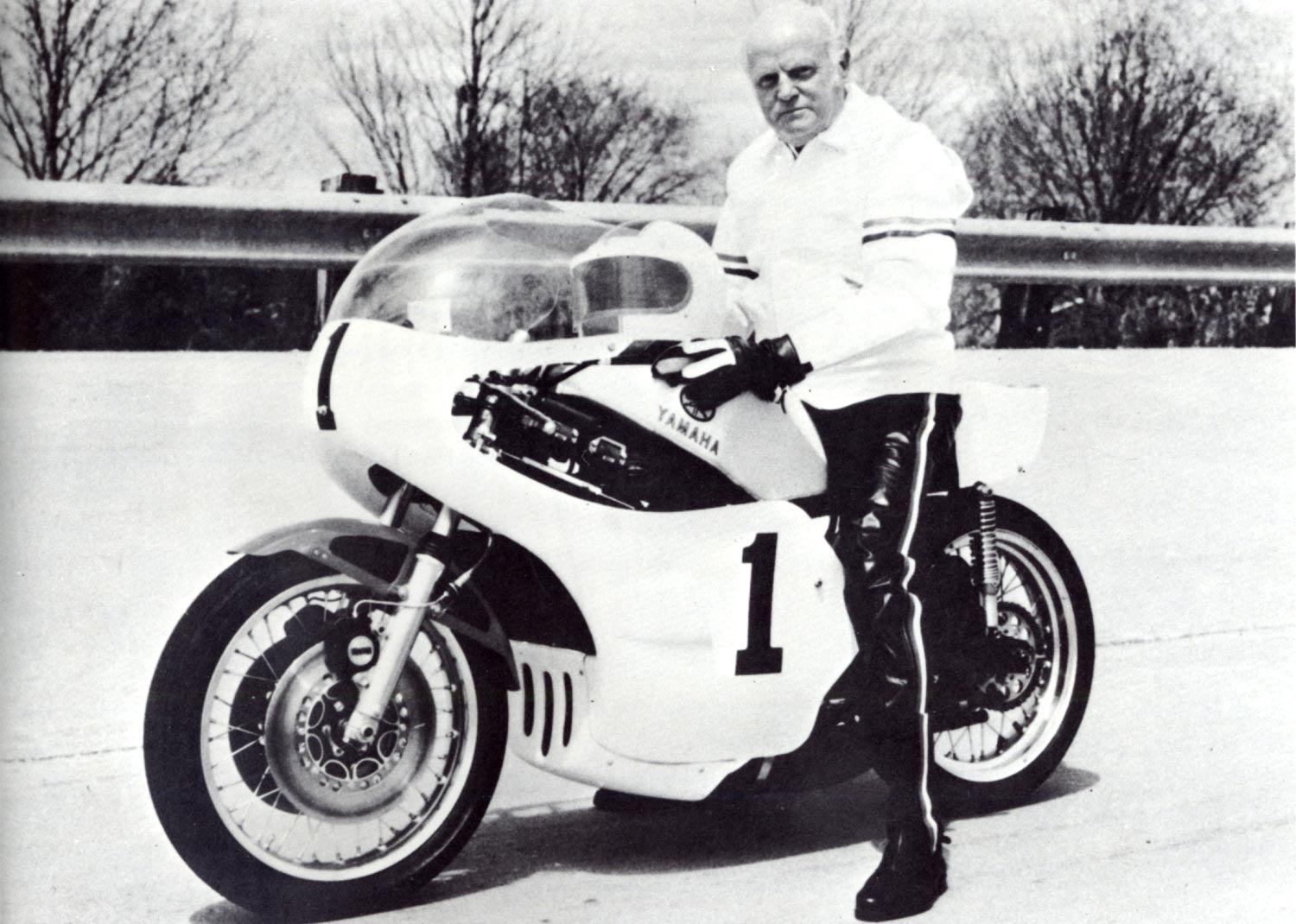
I know that Bill Mitchell had motorcycles on his mind foir a long time. Dave Holls put Tom Matono in my studio, Advance Oldsmobile, in about 1973. All came in early that morning to meet Tom and talk about bikes.
Tom was with us for three years and I do not know what resulted from the meeting. Tom had two great highlights that day, meeting Bill Mitchell in the morning and then having his first Coney Island hot dog, Detroit style, for lunch. I ordered two for each of us, Tom wanted more and thought they came in pairs. He ordered another one.
First, I want a LOT more background on the photo bottom left of Mitchell on a TZ700 Yamaha, the fastest race bike of its era. Did he track that one? The one-piece overbody would also stand some historical research since in the sport that was called a “Tracy Body” for the company that produced them in the 70’s. Was Mitchell ahead of that or parallel to it? Adding the giant 4-leading-shoe front brake to the Harley was a great idea, since that era HD always needed more brake than they gave you. And is that the Ferrari-Camaro in the picture with the Corvette with the roof vent?
That is the Camaro Berlinetta. Photo of the car when it was silver is in this post. You’re thinking of the Pegasus which was a modified Firebird with a Ferrari V-12. Photos of the Pegasus are in this post. Later the Camaro’s design was refreshed and painted red. It had a ZL-1 big block. The Berlinetta was featured in a 1977 issue of Chevy Hi-Performance magazine. Link.—Gary
Bill told me, “My accountant says I can’t get divorced again so I turned to motorcycles.” Not widely known I reckon is that after his GM retirement Bill’s personal design company did a lot of work for Japanese motorcycle makers.
Stories of Mitchell Design are in this post about Larry Brinker.—Gary